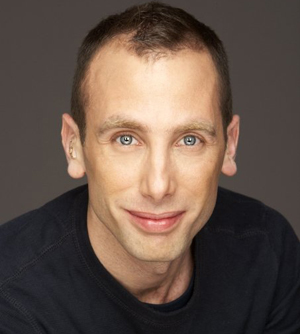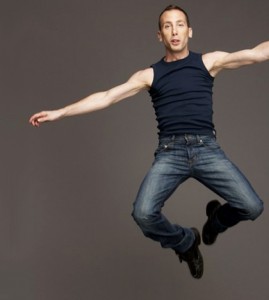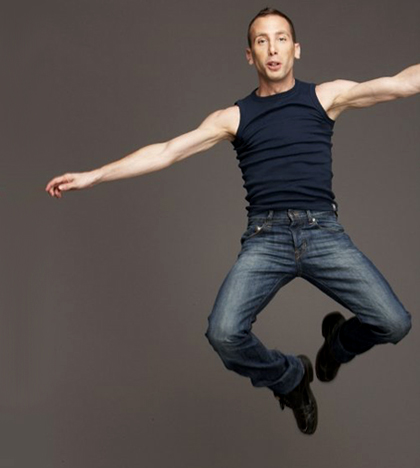Dream Big and Make the Move
Dance artists often face the career challenge of deciding to move to a big city, or a different big city, where work in the arts thrives to secure a job.

We recently spoke with Yo-el Cassell, a talented performer, choreographer, and teacher who made the leap from New York City to Boston in an effort to further the dance horizons for both himself and his wife, Melodie.
While leaving behind years of successful work in the arts in New York, Yo-el quickly turned connections into opportunities in Boston. He currently works as the program manager for Boston Ballet’s Education and Community Initiative’s Citydance program for children, founder and lead teacher of its Boys in Motion Program, resident choreographer and movement teacher at Commonwealth Shakespeare Company, and faculty for contemporary dance at Harvard University.
Yo-el gave us some wonderful words of wisdom for any artist about to make a big change.
You worked as a successful dancer and choreographer in New York City for many years. What made you make the decision to make such a big move and start anew in Boston?
I enjoyed my time when I was a student in Boston immensely and felt deeply connected to the cultural scene; the teachers I encountered, the connections that were maintained after graduating and the professional relationship with those teachers who served as mentors. I also often found myself traveling back and forth between the two cities to choreograph, teach, and perform after graduating.
Later on, based in NY, I was offered a position in Boston that fused everything I was interested in for a cultural institution in the city and secondly, a fantastic offer to live midtown was presented. My wife and I thought this was a sign of something healthy and positive to come for our work, our relationship, and our dreams.
I thought I would never leave New York, having been born upstate and having a fascination with the city since I was young. I remember feeling a sense of anxiety on the day we were traveling to Boston for good. In the end moving to Boston was the best decision my wife and I made, hands down.
Making the move has not only re-invigorated and rejuvenated my passion for the arts and for life, but it has created an identity and sense of freedom for me and my wife. We suddenly felt like we could breathe, grow and develop our own path into new horizons ahead.
How did you successfully connect with some of the most well-known dance organizations in Boston?
One of the lessons I tend to share with students is that it is not entirely on what you may know but who you know. The most beneficial thing is to build a reputation of integrity, a sound committed work ethic, and a genuine generosity that allows people to feel connected to your work but most importantly, to you and your makeup. The idea is not to impress anyone but to impress the work you do. The work will hopefully speak for itself.
Through recommendations from my past teachers and colleagues, I was highly referred to someone at Boston Ballet. When I moved to Boston the incredible Steven Maler, Artistic Director of Commonwealth Shakespeare Company, whom I had worked with as an assistant choreographer when I was a student heard I was back in town and offered me the opportunity to choreograph.
[pullquote]Trust your instincts and listen to your inner voice. Do not be afraid to garner opinions, but in the end you are the one making the decision. And if something doesn’t work, it does not mean you cannot change your path and try over.[/pullquote]
At Boston Ballet, a colleague recommended my name to Jill Johnson, Director of the Dance Department Harvard University, who was in search of a teacher at Harvard.
One of the other variables was being somewhere at an opportune moment. I was in a tea shop and someone came in to discuss tea and at the end, the discussion led me to discover that she was connected to a theater, The Dreamland Foundation in Nantucket. Well, a few months later, I received a call from one of the producers of Dreamland to see if I was interested in choreographing a production with Shira Milikowsky as Director. Shira had just finished assisting Diane Paulus for the Broadway production of Hair. Shira and I had a wonderful time collaborating and a few years later, she asked me to join her as a movement director for American Repertory Theater’s production of Lilly’s Revenge. Shira and Diane were also influential in having me connect with Jill at Harvard.
Were there any challenges along the way?
Absolutely, there were many. But one thing I am truly thankful for is my interest in not only choreographing, but also in teaching, educating, arts management, and performing. When one door was hard to knock on, I was able to go through another door wearing a different hat.
[supercarousel id=4723]
Tell us a little bit about the wonderful community programming with the Boston Ballet’s Citydance and Boys in Motion.
Boston Ballet’s Citydance is part of the organization’s Education and Community Initiative that aims to cultivate and educate a new generation of life-long arts advocates. Our aim is to create the “whole child” using movement as initiation to explore developmental needs such as the need to express and envision.
Boys in Motion aims to change the perception of how we view men dancing, of how we view their process and of how can champion the qualities they bring to dance. The curriculum, much like Citydance, uses dance as a safe environment to explore the creativity, strength, and physical skills that males commonly explore in sports as well.
Boston Ballet’s ECI Department also has the celebrated Adaptive Dance program, serving those with Down syndrome and autism and Taking Steps, a program for girls. The department is forging ahead to connect the community to dance in a way that makes ballet relevant and honor the mission from Boston Ballet of encouraging all to “rethink ballet.”
What do you find the children in the public schools enjoy most about having an opportunity to dance?
The ability to use their imagination. Physically and expressively, to imagine what it feels like to be on “top of a cloud” or “to soar with wings.”
What’s your creative background? How did you become interested in dance early on?
When I was two or three, my family was invited to a party at a neighborhood functioning and they had music playing and it completely overwhelmed me. Movement was pouring out my body and I remember feeling that I could hear for the first time. Since that very moment, I was hooked.
My family was incredibly influential. Music and expression was highly encouraged in our household. My dad showed me old movies of the work of Fred Astaire, Gene Kelly, Charlie Chaplin, Buster Keaton, Jerome Robbins, Sammy Davis Jr., and Baryshnikov. I was absorbed.
My mom would show me how to dance with a partner, having been involved with flamenco when she was a child. My grandfather used to put on the radio every Sunday to listen to all types of music. Our house was like a conservatory.
When I was three, I begged my parents to take me to a ballet class and in the first class, the teacher told us to jump like a lion. Bam, that was it. For me, from the very beginning, dance was holistic and a chance to be creative and express.

Congratulations on recently becoming a father! How do you like being a dad and has the baby been in the studio with you?
I feel like I am the newborn. It is exhilarating, exciting, frightening, exhausting and everything else In between. Most importantly, it is honorable, enriching and simply, beautiful. Keaton, my son, inspires me completely and has become a muse for my creativity in living and creating.
Keaton has already taken his first dance class at Harvard. My wife had him in her arms observing class and all of a sudden I swooped him up and continued teaching. He was observing intently and going along for the ride with curiosity and joy.
What advice would you give to aspiring performers, choreographers, or educators taking the leap and moving to a new place to pursue their careers?
Trust your instincts and listen to your inner voice. Do not be afraid to garner opinions, but in the end you are the one making the decision. And if something doesn’t work, it does not mean you cannot change your path and try over.
It is much like the scene in Singing in the Rain where in the number Broadway Ballet, Gene Kelly is knocking on different doors to reach his goal. He knocks on one door and it shuts. He knocks on the other door and it shuts and then finally, he knocks on the last door, and it opens. Yes, the door was farther away than where he wanted to be at first, but when he entered the door he met people that helped him lead back to re-entering the first door he knocked on.
Life is so precious and if we can just know that whatever path you choose, you have the ability to pick up the pieces to build a path of your own, to be inspired, and to most importantly, use that inspiration to impress the quest you make. As the saying goes, success is not in the destination but in the journey you traveled.



